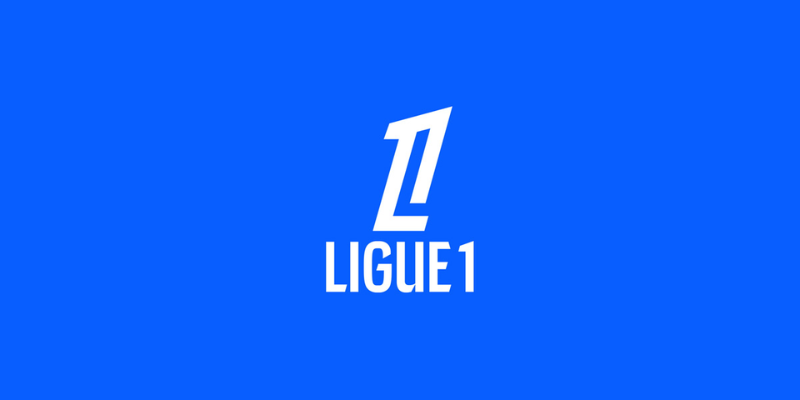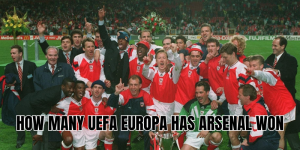The question “is Ligue 1 better than La Liga” sparks fierce debate. The short answer? In many respects, La Liga still holds the edge—but Ligue 1 has strengths and recent trends that make the comparison less one-sided than many assume. In this article, ModiFoot will walk you through UEFA rankings, competitiveness, financial power, playing style, youth development, and why fans can defend both sides passionately.
Key metrics: UEFA coefficients and international prestige

To understand league quality, one of the most objective measures is how clubs perform in Europe—and how that reflects in UEFA association coefficients.
- As of the latest rankings (2025), La Liga is ahead of Ligue 1. Spain ranks higher in the UEFA country coefficients than France. This means Spanish clubs have had more consistent success in Champions League, Europa League, etc.
- Ligue 1 is still among Europe’s top 5 leagues in coefficient rankings, but there’s a visible gap between its top teams and the rest. French clubs beyond PSG tend to struggle against stronger European competition consistently.
- La Liga’s top clubs also benefit, iga has maintained superiority.
Competitiveness and balance within the league

Many fans argue that Ligue 1 has qualities that La Liga lacks—especially in terms of physicality andpredictability. Let’s see how they compare in terms of competitiveness, parity, and drama.
Ligue 1: Strengths in intensity, but weaker depth
- Ligue 1 is often praised for being more physical, intense, and direct: matches tend to be tighter, especially defensively, and there’s less space for skillful dribblers to roam freely—making for gritty, combative games.
- However, PSG’s dominance has often dulled suspense at the top. In many recent seasons, the title race has been decided well before the final weeks. The gap between PSG and the rest (Monaco, Marseille, etc.) can be large. arge.
La Liga: Technical flair, but occasional imbalance
- La Liga generally shows higher technical and tactical sophistication. Teams like Barcelona, Real Madrid, Villarreal often build attacks with patience; there is more emphasis on possession-based football, creative midfield play, tactical variation.
- On competitiveness: La Liga can suffer. The gap from the elite to mid-table can be steep. Some seasons have lacked suspense below the very top spots. But crucially, title races have still been exciting. RunRepeat’s data shows La Liga has one of the lowest average point gaps between champion and runner-up among big leagues in recent years, meaning the title often matters until late in the season.
So while Ligue 1 may offer more intensity and unpredictability in select matches, La Liga often wins out on overall competitive balance when considering year-to-year consistency, title races, and depth of challenge.
Financial muscle, transfers, and visibility
Money talks—and in football, money often shapes what “better” means: player quality, infrastructure, media deals, global reach.
- La Liga’s broadcast rights are considerably more influential globally. Spanishobally. Spanish clubs benefit.
- Ligue 1 has recently faced issues with media rights revenue declining, and that impacts mid-tier clubs more than giants. When TV income drops, clubs outside major markets struggle to keep up.
- On transfers: Ligue 1 is often a selling league. Young talents are developed and then bought by richer clubs abroad (often in La Liga, Premier League, Bundesliga). While this proves its strength in producing players, it also limits its capacity to retain elite talent long-term.
La Liga, conversely, more frequently retains stars or attracts established world-class players—enhancing match quality, global interest, and competitive stakes.
Style of play and fan experience

What feels better to watch? What gives more flavor, drama, emotion?
- Ligue 1 often delivers games with high physical intensity, high stakes in defense, fast transitions. This style can result in more scrappier, edge-of-seat matches vs. some La Liga fixtures which may be more controlled. Fans of high tempo, stress, gritty duels may prefer Ligue 1 in that sense.
- La Liga offers a blend: top teams play elegant, possession-based football; even mid-table teams often emphasize technique. It may sacrifice some brute intensity, but it provides storytelling: tactical masterclasses, dribbling stars, intricate buildup play.
The emotional experience depends what you value more—grit vs. grace, flair vs. fight. Both leagues have passionate fan cultures, storied derbies, and moments of unforgettable glory. But overall, many pundits feel La Liga gives a richer, more varied fan experience.
Youth development, infrastructure, and long-term outlook
- Youth academies in France have been world-class (Clairefontaine, etc.). French youth production (Mbappé, Camavinga, etc.) has set standards. Ligue 1 is very good at giving young players minutes in top-flight football.
- La Liga clubs also have strong academies. Youth talent often gets polished in competitive environments domestic + European.
- Infrastructure and financial sustainability: La Liga’s financial structure, stadiums, global marketing tend to be more solid, though it’s not without issues. Ligue 1 has recently struggled with media rights and club finances beyond PSG. That threatens long-term competitiveness and stability, especially for second-tier clubs.
Verdict: Is Ligue 1 better than La Liga?
Putting it all together:
- If your measure of “better” is European pedigree, overall global visibility, style, and financial power → La Liga wins.
- If you care about physical intensity, tense matches, break-out stories, youth players, Ligue 1 has strong appeal and unique advantages.
- But on most quantitative metrics—UEFA coefficient, income, competitive drama over decades—La Liga is still ahead.
So the answer to is Ligue 1 better than La Liga is: No, but Ligue 1 is closing the gap in some respects. It’s not as far behind as critics like to claim, especially when Ligue 1 clubs do well in Europe, or when PSG raises the bar.
Conclusion
In conclusion, is Ligue 1 better than La Liga? Not yet—La Liga continues to win more often in prestige, technical quality, financial strength, and consistency. But Ligue 1 offers its own flavor: raw energy, developing stars, dramatic matchups, physical football.
If you’re a fan wanting tactical brilliance, elegant styles, and deeply storied matchups, La Liga remains the go-to. But if you love young talent coming through, unpredictable clashes, and the kind of fight a physical league brings, Ligue 1 deserves respect.
ModiFoot encourages you to keep watching both—compare players, performances, and enjoy the different beauties each league brings. Want more? Stay tuned: upcoming articles will dive into top 10 players in each league, match-by-match comparisons, and tactical breakdowns to help you decide for yourself.






